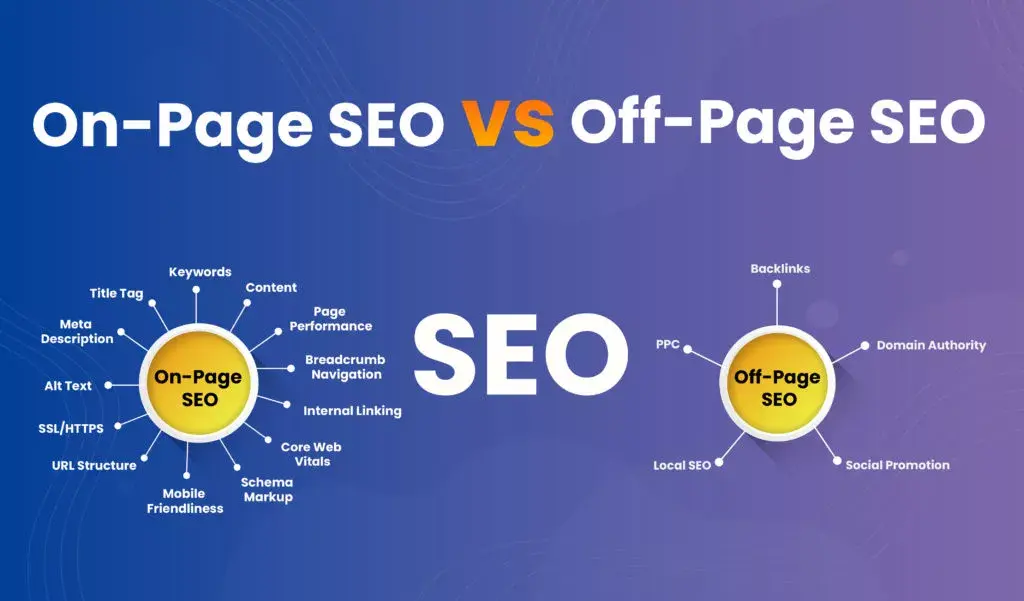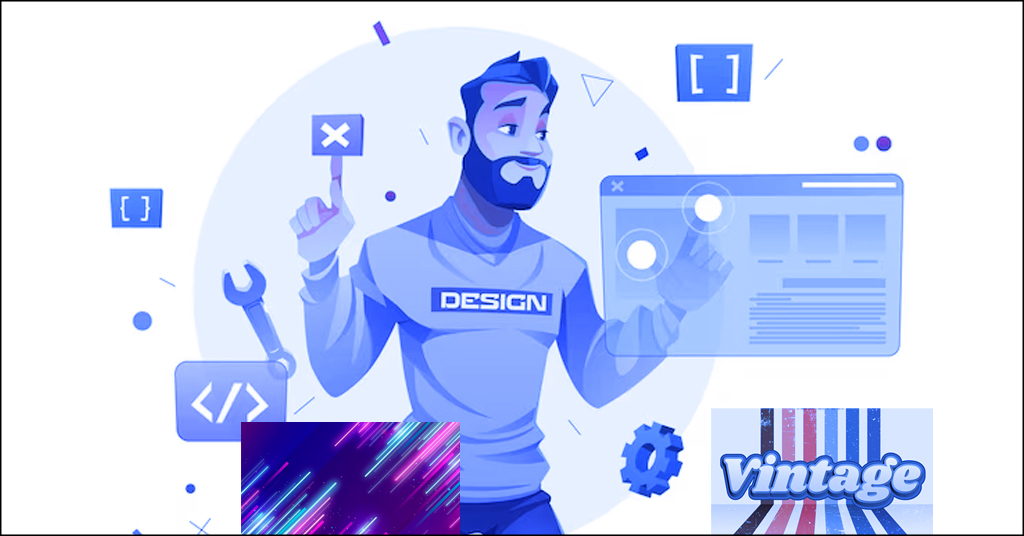Reinventing Retail: Unlocking 10 Strategies for Advancing Your E-commerce Website's User Experience
Table of contents

Retail is changing, and e-commerce websites need to keep up. In this blog by website design company Jacksonville FL, learn how to unlock 10 strategies to improve your website’s user experience and stay ahead of the competition. Discover how to stay updated on the latest trends, optimize page designs, and use SEO to increase sales.
Introduction
Introducing the concept of e-commerce is an exciting opportunity for retailers and businesses. It has opened up a whole new world of possibilities, allowing them to reach a larger customer base than ever before. With the right strategies in place, businesses can create an online shopping experience that is both engaging and enjoyable for their customers.
In this article, we will discuss 10 strategies to help you take your e-commerce website’s user experience to the next level. From optimizing your checkout process to personalized product recommendations, these tips will help you make the most out of your digital store. With these strategies in place, you’ll be able to retain more customers and build stronger relationships with them. So let’s get started!
What is E-commerce?
E-commerce is a rapidly growing industry, and its potential to revolutionize retail is astounding. By providing customers with convenient online shopping options, businesses can easily reach a massive global audience while unlocking new opportunities for growth. Additionally, e-commerce offers businesses the chance to create an immersive and engaging user experience that encourages customers to come back time and again. In order to understand the true potential of e-commerce, it is important to first understand what it is. E-commerce refers to the process of buying or selling products or services online. This can be done through a variety of means, such as an online storefront, auction site, or even social media platform. No matter how customers are engaged with e-commerce businesses, there is always an exchange taking place – whether it be money for goods/services or simply exchanging information. While e-commerce may seem like a relatively new concept, its roots can actually be traced back centuries. One of the earliest examples of trade conducted electronically was in 1876 when Western Union launched a telegraph service that allowed users to send money orders instantly across the country. While this service was groundbreaking at the time and helped set the stage for modern e commerce transactions, it would ultimately be eclipsed by more direct methods like credit cards and electronic funds transfers (EFTs).
Benefits of E-commerce for Retailers
E-commerce has revolutionized the retail industry, providing retailers with endless opportunities to reach a wider audience and increase their revenue. In simple terms, e-commerce refers to the buying and selling of goods and services online. It allows retailers to establish an online presence, expand their customer base, and streamline their operations. The benefits of e-commerce for retailers are numerous, including increased sales, reduced costs, and improved customer experience. By leveraging e-commerce, retailers can offer their customers a seamless shopping experience, from browsing to checkout, without ever leaving their homes. Additionally, e-commerce allows retailers to personalize their offerings, track customer behavior, and analyze data to make informed decisions. As retailers strive to reinvent themselves and stay ahead of the competition, e-commerce provides them with a powerful tool to unlock new strategies and advance their website’s user experience. With the right approach, e-commerce can help retailers achieve their business goals and thrive in the digital age.
10 Strategies to Reinvent Retail and Improve User Experience
As the retail industry continues to evolve, it is crucial for e-commerce websites to adapt and reinvent themselves to improve user experience. Here are 10 strategies that can help you achieve this.
The key to harnessing this potential is creating an optimized e-commerce website. Here are 10 strategies by Web Design Jacksonville for advancing your e-commerce website’s user experience:
1. Pay Attention to UI/UX Design

The visual appeal of your website will be the first thing customers notice when they visit your page. Make sure that you have an aesthetically pleasing layout with intuitive navigation tools and easy-to-use search functions.
2. Personalize Your Content
Create content that’s tailored to the needs of different customer segments so that clients can quickly find what they’re looking for. You can also use personalization tools such as customer analytics or AI algorithms to create even more relevant and engaging content.
3. Make Mobile Shopping Easier
With more customers using their mobile devices to shop online, it’s essential that you optimize your website for mobile users. Spend time making sure your pages load quickly on mobile devices and make sure all of the features are easy to use on a smaller screen size.
4. Incorporate Video Content
Videos are an effective way of communicating information about products or services in an entertaining and engaging way that catches customers’ attention. Incorporate videos into your website design by adding product demonstration videos, customer testimonials, or instructional tutorials on how to use certain features of your products or services.
5. Utilize Social Media Integration
Social media platforms offer great opportunities for businesses to engage with their audiences directly and encourage conversions by driving traffic from one platform to another. Integrate social media buttons into your website design so customers can easily share products or services with their networks and increase visibility for your business.
6. Use Retargeting Ads
Retargeting ads allow you to reach out to previous visitors who didn’t make a purchase after visiting your site and remind them of the products or services they were interested in before leaving the page. This is an effective way of boosting conversions as customers may be encouraged by seeing something they had considered buying previously being advertised again on another platform or website they visit in the future.
7. Implement Live Chat Features
Live chat features provide customers with immediate assistance if they have any questions while browsing or shopping on your website, which can help reduce cart abandonment rates as well as customer dissatisfaction due to unanswered inquiries or confusion about a certain product or feature offered by your business.
8. Optimize Checkout Processes
Make sure that any payment information fields are secure and clearly labeled so clients know exactly where their data is going and why it needs to be entered in the first place, this will help prevent cart abandonment due to security concerns from customers who don’t feel comfortable submitting sensitive information online without knowing exactly what it will be used for later on down the line in order processing stages etc.. Additionally, give customers multiple payment options so they can choose whatever works best for them when checking out from their shopping cart(s).
9. Provide After-Sale Support
After someone makes a purchase from you, provide them with helpful resources such as product tutorials, contact forms for inquiries about returns/exchanges/refunds, FAQ sections etc. This will help ensure satisfaction levels remain high long after someone has completed a transaction with you – resulting in higher levels of customer loyalty over time!
10. Monitor Performance & Analytics
Regularly monitor analytics-related data such as bounce rate (the number of visitors who leave without viewing other pages), conversion rate (the percentage of visitors who take action such as signing up/subscribing, etc.), average session duration (time spent on site), click-through rate (the number of clicks made per page view), etc. This will help identify areas where improvements need to be made in order for you to optimize your user experience further over time – ensuring maximum satisfaction levels from all visitors & customers alike!
By implementing these strategies, you can reinvent your retail business and provide a seamless and enjoyable shopping experience for your customers.
Develop a Mobile-Friendly Website

In today’s day and age, having a mobile-friendly website is not just a nice-to-have feature, it’s an absolute necessity. With more and more people accessing the internet through their mobile devices, it’s crucial that your e-commerce website is optimized for mobile use. Not only does a mobile-friendly website improve the user experience, but it also helps with search engine optimization and can increase your website’s visibility. Some tips for developing a mobile-friendly website include using responsive design, optimizing images and videos for mobile viewing, and simplifying the navigation menu. It’s also important to ensure that your website loads quickly on mobile devices, as slow loading times can lead to high bounce rates. By developing a mobile-friendly website, you’re not only improving the user experience for your customers, but you’re also staying ahead of the competition and ensuring the long-term success of your e-commerce business.
Incorporate Social Media into Your Website
Incorporating social media into your e-commerce website can greatly enhance the user experience and help you stand out in a crowded online marketplace. By integrating social media platforms like Facebook, Instagram, and Twitter, you can create a seamless shopping experience that allows customers to easily share products with their friends and followers. This not only increases your brand awareness but also helps to build trust with potential customers who may be more likely to make a purchase if they see that their friends have had a positive experience with your products. Additionally, social media can provide valuable insights into customer behavior and preferences, allowing you to tailor your marketing efforts and product offerings to better meet their needs. By incorporating social media into your e-commerce website, you can create a more engaging and personalized shopping experience that will keep customers coming back for more. So, don’t miss out on the opportunity to take your e-commerce website to the next level by incorporating social media into your strategy.
Utilize Personalization Techniques
Personalization techniques are a powerful tool in the world of e-commerce. By utilizing data collected from your customers, you can create a tailored shopping experience that will keep them coming back for more. One effective way to personalize your website is by offering product recommendations based on their browsing and purchase history. This not only makes the shopping experience more convenient for the customer, but it also increases the likelihood of a sale. Another way to personalize is by offering customized promotions and discounts. By analyzing customer behavior, you can offer deals on products they are most likely to purchase. This not only increases sales but also creates a sense of loyalty among your customers. Personalization techniques can also be used to improve the overall user experience of your website. By offering personalized content and recommendations, you can make the shopping experience more enjoyable and engaging for your customers. In today’s competitive e-commerce market, personalization techniques are essential for staying ahead of the game. So, if you want to take your e-commerce website to the next level, start utilizing personalization techniques today.
Enhance Site Navigation and Searchability
One of the most important factors in creating a successful e-commerce website is ensuring that your site is easy to navigate and search. Customers want to be able to find what they’re looking for quickly and easily, without having to click through multiple pages or search through endless menus. By enhancing your site’s navigation and searchability, you can improve the overall user experience and increase the likelihood that customers will make a purchase. Some strategies for enhancing navigation and searchability include using clear and concise labels for categories and subcategories, implementing filters and sorting options, and providing a prominent search bar. Additionally, it’s important to ensure that your site is mobile-friendly, as more and more customers are using their smartphones to shop online. By prioritizing site navigation and searchability, you can create a seamless and enjoyable shopping experience for your customers, which can ultimately lead to increased sales and customer loyalty.
Leverage Automation Tools for Efficiency
In today’s fast-paced world, time is a valuable commodity. As an e-commerce business owner, you need to leverage automation tools to streamline your operations, save time, and increase efficiency. Automation tools can help you automate repetitive tasks, such as inventory management, order processing, and customer support. By doing so, you can free up your time and focus on more critical tasks, such as marketing, product development, and customer acquisition. Automation tools can also help you improve your website’s user experience by providing personalized recommendations, targeted promotions, and real-time support. By leveraging automation tools, you can provide a seamless and efficient shopping experience for your customers, which can lead to increased sales and customer loyalty. So, if you want to reinvent your retail business and unlock its full potential, start by leveraging automation tools for efficiency. With the right tools and strategies in place, you can take your e-commerce website to the next level and achieve long-term success.
Analyze User Behavior for Improved User Experience

Analyzing user behavior is a crucial aspect of improving the user experience on your e-commerce website. By understanding how users interact with your site, you can identify pain points and areas for improvement. One effective way to analyze user behavior is through the use of analytics tools. These tools can provide valuable insights into user behavior, such as which pages are most frequently visited, how long users stay on each page, and which products are most popular. Armed with this information, you can make informed decisions about how to improve your site’s user experience. For example, if you notice that users are frequently abandoning their shopping carts, you may want to streamline the checkout process or offer incentives for completing a purchase. By taking a data-driven approach to user experience, you can create a website that is both user-friendly and effective at driving sales.
Conclusion
In conclusion, reinventing your retail business through strategic advancements in your e-commerce website’s user experience is essential in today’s digital age. By implementing the ten strategies outlined in this article, you can create a seamless and personalized shopping experience for your customers, ultimately leading to increased sales and customer loyalty. Remember to prioritize mobile optimization, simplify your checkout process, and utilize data to personalize your marketing efforts. According to web design company near me, don’t forget the importance of customer reviews, social media engagement, and providing excellent customer service. By continuously analyzing and improving your website’s user experience, you can stay ahead of the competition and thrive in the ever-evolving world of e-commerce. So, take action today and start reinventing your retail business for the better. Your customers will thank you, and your bottom line will too.







